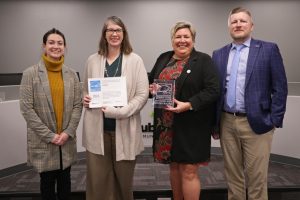A study conducted to determine next steps in the Dubuque Community School District moving from three middle schools to two has concluded with a recommendation from the planning team that facilities are expanded or reconstructed facilities on the Washington Middle School Site.
The recommendation was presented at the facilities/support services committee meeting on February 6 and will also be presented to the full board at its February 13 meeting. In April, the School Board voted to approve a goal of moving to a two middle school model by fall 2026, with a focus on creating feeder schools to the district’s two high schools.
Consolidation into two middle schools would ensure that all district middle school students have access to similar, high-quality learning spaces, while also resulting in a reduction of approximately $3.4 million annually from the district’s operating budget.
“As we moved through the process, maintaining a school facility at the Washington Middle School site continued to emerge as the strongest, most efficient option,” said Laura Peterson, an architect with INVISION. “The site is a cornerstone of the community given its central location and high visibility. The site also provides numerous options for expansion to develop a larger school that focuses on providing high-quality modern learning spaces for students.”
The study, led by Iowa-based INVISION Architecture, included baseline data collection and analysis of the district’s current middle schools, benchmarking against best practices, analysis of potential consolidation locations, and conceptual work to illustrate how a school could be situation on the site. Feedback was sought throughout the study process from various district stakeholder groups and a community task force including administrators, parents, teachers and community members moved in-depth through the process as it unfolded.
At the committee meeting, Tim Oswald from Piper Sandler also presented information to the Board related to funding available to the district through the Securing an Advanced Vision for Education (SAVE) fund as well as other potential funding sources, including possible efforts to obtain a general obligation bond through a ballot issue. Expansion or reconstruction of the school is estimated to cost between $65 million and $120 million depending on the scenario selected. Depending on the agreed upon scope, a general obligation bond could also allow the district to more quickly address additional infrastructure needs, such as climate control across all district facilities.
“This recommendation is the first step in charting the future of the district, both in providing high-quality learning spaces to all off our students while also increasing efficiency across the district,” said Amy Hawkins, superintendent of schools. “We look forward to future discussion with the Board to determine our path forward.”

